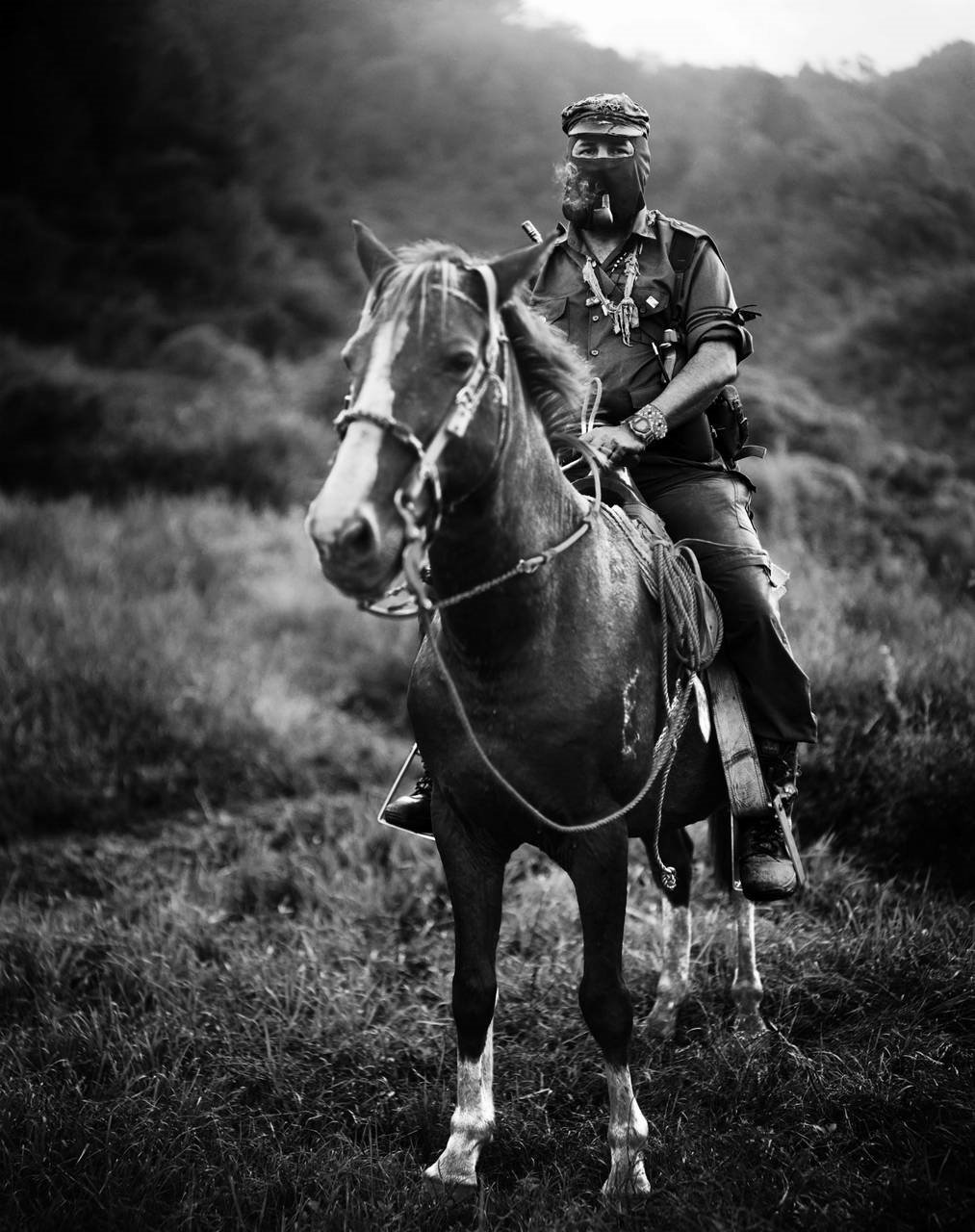by BENJAMIN DENGL
 Subcomandante Marcos in Chiapas, Mexico, 1996. PHOTO/José Villa/Creative Commons 3.0 License
Subcomandante Marcos in Chiapas, Mexico, 1996. PHOTO/José Villa/Creative Commons 3.0 License
The Zapatistas’ Dignified Rage: Final Public Speeches of Subcommander Marcos by Subcommander Marcos. Introduction by Nick Henck. Translation by Henry Gales. (AK Press, 2018)
Beyond the city streets and markets of San Cristóbal de las Casas, steep roads wind into the misty mountains of Chiapas, past the Mexican state’s military outposts, and toward the autonomous communities of the Zapatistas, a movement which erupted onto the world stage on January 1st, 1994. That day, they proclaimed their resistance to centuries of exploitation and abuse, and denounced Mexico’s entry into the North American Free Trade Agreement (NAFTA).
As Zapatista Subcomandante Marcos explained then, “NAFTA is a death sentence for the indigenous people.”
Fourteen years later, in one of Marcos’ final public speeches, he said “we ask those who look up” to those in power for answers, “at least for a moment, to put aside your readings of The Economist, The New Yorker, People, and Al Gore’s keynote speeches; to put to rest for a few minutes your ghosts of the Gulag and the Berlin Wall; to put out for a moment the candles lit for the ‘lesser evil’ former candidate…”
These words are a fitting invitation to step outside of capitalism and politics as usual and into The Zapatistas’ Dignified Rage: Final Public Speeches of Subcommander Marcos, a new collection of the pipe-smoking rebel’s thoughts on social theory, Mexican politics, Zapatista history, and anti-capitalist organizing from below. Of course, scattered throughout the book are Marcos’ jokes, anecdotes of life in La Realidad, and children’s stories with hidden revolutionary meaning, such as The Pedagogy of the Machete and other anti-patriarchal parables.
The bulk of Marcos’ speeches gathered here are from international gatherings and conferences in 2007 and 2009 in San Cristóbal de las Casas, Chiapas at the Indigenous Center for Integral Training-University of the Earth, a grassroots educational center with long-standing ties to the Zapatistas. The Center promotes ecological sustainability, self-sufficiency, and community empowerment.
Marcos presented his speeches at these gatherings alongside other notable intellectuals such as world-systems analyst Immanuel Wallerstein, Mexican social scientist Carlos Antonio Aguirre Rojas, British art critic John Berger, Canadian journalist Naomi Klein, prominent leftist Mexican thinkers Gustavo Esteva and Pablo González Casanova, and many others from around the world. The introduction to the book helpfully contextualizes Marcos’ speeches alongside those of other presenters, as well as introduces the Zapatistas and their struggle, from the initial uprising in 1994, through the “Other Campaign” to Marcos’ farewell speech in 2014, when he stepped down from the public role as Zapatista Subcomandante.
A rich vein of thought and analysis coursing through the pages of this book deals with Marcos’ views on the relationship between theory and reality, and how it applies to the Zapatista struggle.
At a 2007 conference in San Cristóbal, Marcos begins one of his speeches on theory by referencing music he had heard the night before, music which had a “corrido-cumbia-ranchera-norteña beat.”
Toward Freedom for more
